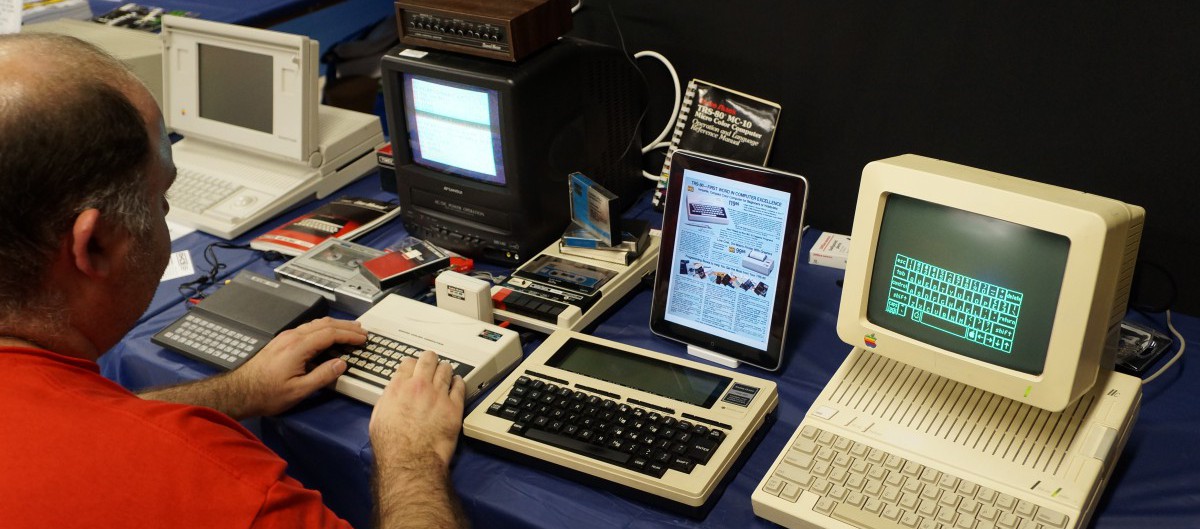There is an increasing need for knowledge and skills in using computing technology in today’s work force. According to an article written by Cathy Hopkins in a magazine called Technique, trainers of software packages from different companies approximated that fifty percent of their targeted group did not have adequate skills in learning to utilize their software.
Whether you are a manager at a retail store who has to keep track of shipments every Friday morning or working as a receptionist who has to keep track of schedules on a Windows calendar, it is important to have an intermediate working-knowledge of computers.
As discussed in Filippucci and Pacei’s article in Statistica, computer skills are directly related to gender, educational level, and occupation. Intermediate knowledge when it comes to computer skills can therefore seem like an ambiguous term to some. Yes, computer skills are in connection to occupations, but more and more occupations are also increasing the standards for being “technically-savvy” in their job responsibilities. Therefore, the base for being intermediately knowledgeable of computers in this article will be a fair amount of ease in using Microsoft Word, search engines on the WorldWideWeb, and being able to communicate via arguably the most popular email system currently; Gmail.
Whichever field a person may be working in today’s world is not excluded from the integration of computers. A Fitness Trainer has to be knowledgeable of the different computerized machinery in their gym. An insurance agent and car dealer has to know how to input the data they received from their clients into their company’s software system. According to Paino and Renzulli, even students attending school are rewarded higher achievements by teachers for demonstrating good computer skills.
It is no wonder anymore that regardless whichever profession you are working in, your boss will regard you with higher admiration for demonstrating good computer-using skills.
With less limitations on where you can physically go in today’s world, countries are populous with people of many different cultural backgrounds and experiences. A lot of the times people look at that as a barrier which immigrants have to overcome when coming from poorer countries into more affluent countries. Culture shock, especially when I comes to technology, can be a major dilemma in many people’s lives in the West.
The differences in culture can actually be treated as an advantage in the different ways that a person can approach this newness.
There are many roads one can take in gaining sufficient computer skills. Especially if you are living in a metropolitan area, it is all-the-more easy for you to find a free class that will teach you about Microsoft Office and the vast world and usage of the internet.
If those are not available to you, you can always try to learn on your own. Systems today are interactive enough to help you along the way of trying to understand them. Microsoft Office and Gmail definitely have an interactive system where you can get answers to specific questions regarding the system when trying to figure out how it works.
Understanding one system of technology is a gateway into understanding many more. Microsoft Word is only one of many software systems that can be used to get similar results. So is Gmail. Also, when it comes to search engines, there are many different systems that were built for your benefits with different purposes in mind. As you learn about one system, you will gain the confidence and background knowledge of working another. You simply have to try.
WORKS CITED
Carlo Filippucci, & Silvia Pacei. (2013). MEASURING COMPETENCE IN COMPUTER SKILLS. Statistica,67(1), 3-25.
Hahnel, C., Goldhammer, F., Naumann, J., & Krohne, U. (2016). Effects of linear reading, basic computer skills, evaluating online information, and navigation on reading digital text. Computers in Human Behavior, 55, 486.
Holt, Lila, & Brockett, Ralph G. (2012). Self direction and factors influencing technology use: Examining the relationships for the 21st century workplace. Computers in Human Behavior, 28(6), 2075-2082.
Hopkins, Cathy. (2009). Improving auto workers’ computer skills: Many adults are re-entering the workforce due to layoffs and downsizing. But what about the workers who entered the workforce before it became so highly computerized and technically complex? CTE has much to offer them as well.(career and technical education). Techniques,84(3), 48.
Paino, Maria, & Renzulli, Linda A. (2013). Digital Dimension of Cultural Capital: The (In)Visible Advantages for Students Who Exhibit Computer Skills. Sociology of Education,86(2), 124-138.
My think piece was written using the outline of a paragraph-by-paragraph format. I started out small. There was first the basic concept of what I wanted to convey to my audience. Then I gathered my research material and went to work of producing the paragraph-by-paragraph format. I had the general idea of what I wanted to convey in each paragraph. From there it was a matter of inputting the correct content into each paragraph. After completing the Think Piece, I realized that it was a blog post reaching out to an audience who probably only have a few minutes to spare on my writing. That thought provoked me to steer from my initial planning of having only a few paragraphs to creating smaller chunks which will make it easier for my reader to understand my writing fully.
My intended audience would be the people who may at least be capable of turning on the computer to try to complete important tasks. There are many people out there who are under the pressure of trying to integrate themselves into their workforce by learning about the new computerized systems that are utilized at their workplace now. My article is intended towards them. It is to raise awareness and provide a stepping ladder into learning more about what they need to learn.



